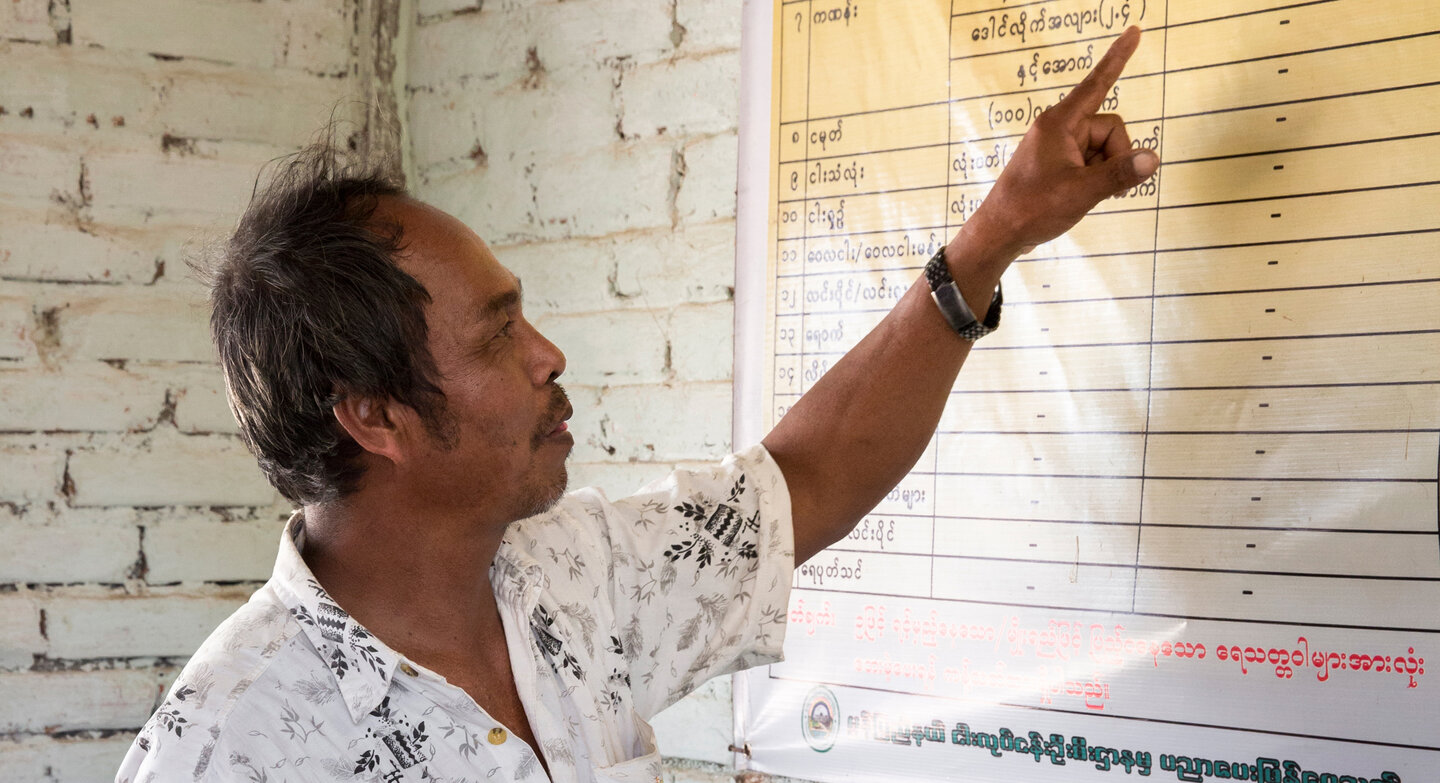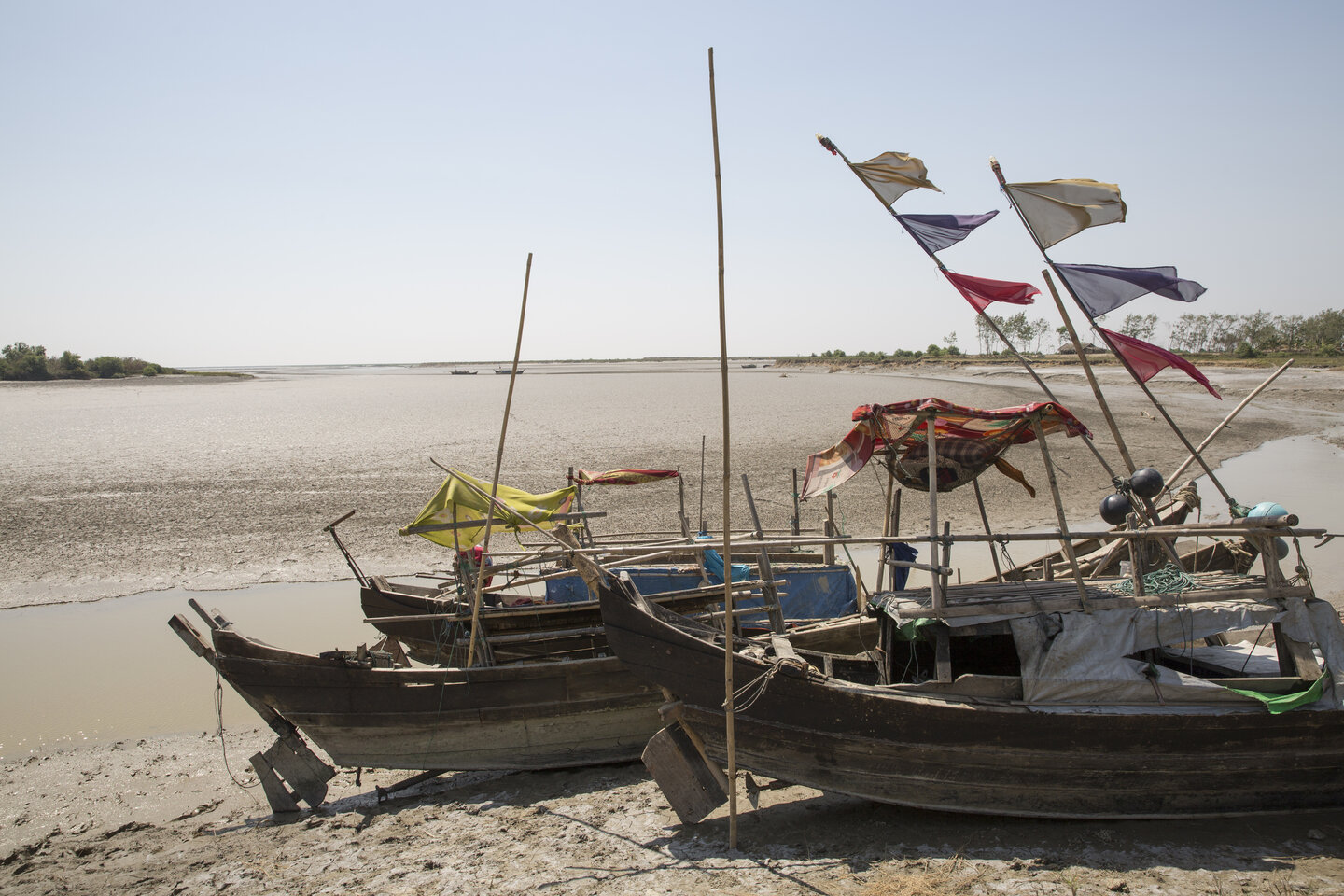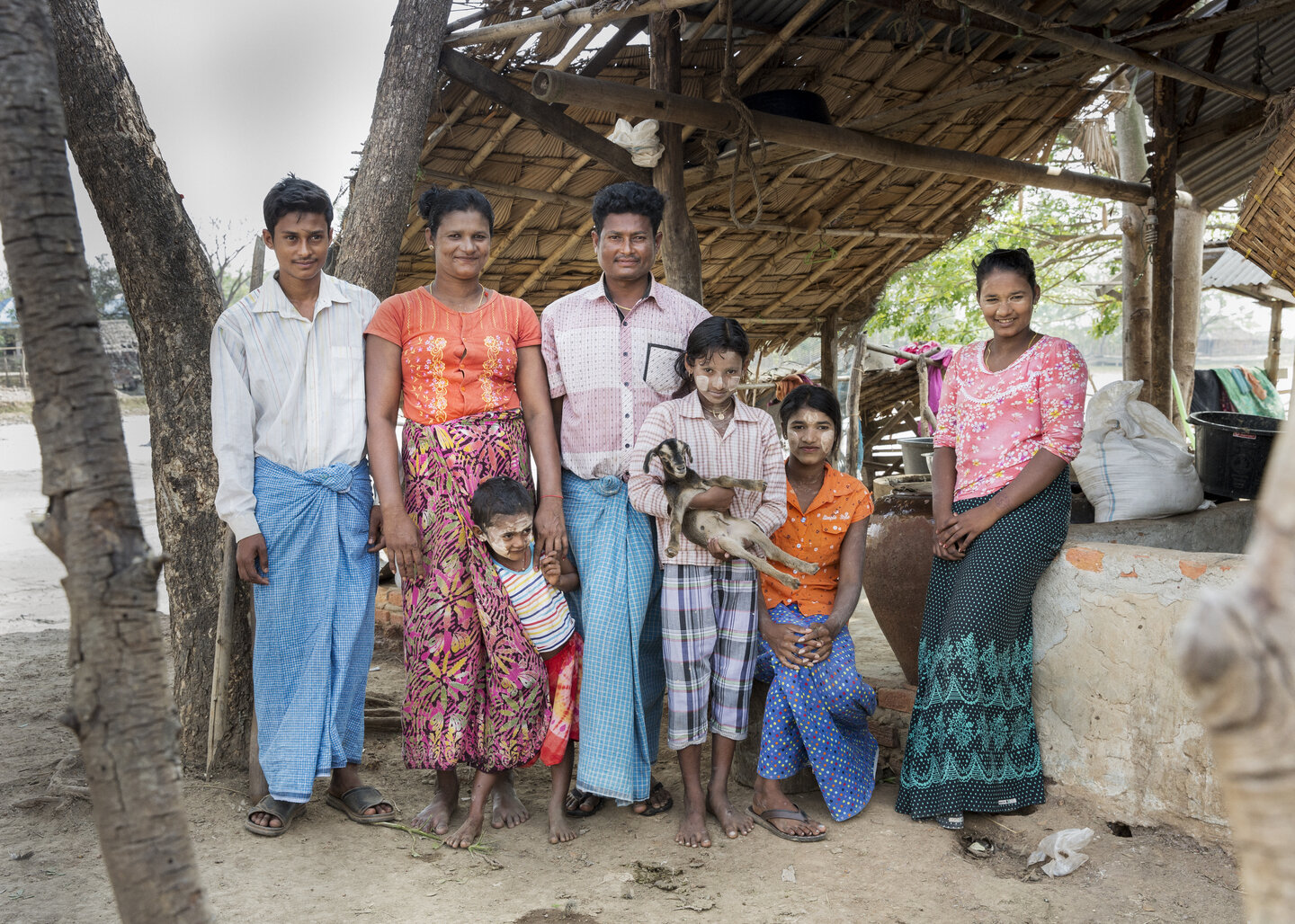Like their forefathers, Win Tun and Than Aye are proud fisherpeople. They live by the Gulf of Mottama in Myanmar, where the rivers flowing into the sea create an ideal spawning ground. Fishermen are now pooling their forces to preserve this valuable ecosystem.
Everything is fish in Than Aye and Win Tun’s life. Their house smells of fish. Their joys and worries are about fish, and both are from fishing families, in which the occupation is handed down from father to son from one generation to the next.Than Aye is 46 years old and Buddhist. Her husband Win Tun is six years younger and Muslim. They have five children aged 4 to 22. “We’re not rich, we’re not poor either,” says Than Aye. “We have a roof over our heads and always have something to eat.” Their everyday lives are ordered by the natural rhythm of the tides.
Upon reaching their house, we’re a bit disappointed: far and wide, no sea in sight. Only on days around the new and full moon is the tide high enough to flood the canals and inlets by the fishing villages. “Come, I’ll show you my boat,” says Win Tun.
Win Tun’s boat lies high and dry on the sand only a few steps from the house. And yet, in just a few days it will be rocking in the waves when Win Tun and some helpers head out to sea for a fortnight. Sometimes, says Than Aye, her husband is like a hero. We ask whether she’s never afraid for him. She’s afraid, she says:
Than Aye, wife
On the short walk to the boat we passed a statue of U Shin Gyi, the guardian spirit of waterways. Before the fishermen put to sea, they lay little offerings, betel nuts, rice or sugar, for example, at U Shin Gyi’s feet.
We ask Than Aye whether she sometimes prays for her husband to get back safely. She leads us to the Buddha shrine she has built upstairs in her house. “This is where I pray with the children,” she says.
Fishing provides a livelihood for tens of thousands of people along the Gulf of Mottama: not just fishing families, but merchants, market women, boatbuilders and factory workers, too. There are three factories on Myanmar’s east coast that buy up and export fish.
Soe Win is a shareholder and co-director of Mawlamyaing Holding Ltd. He is delighted and proud to show us the factory he and his partners have built up over the course of twenty years. In the clean cool processing shed, workers wrap the fish and arrange them in the deep-freeze room. The fish are exported straight from here to China, Malaysia and Singapore.
Fish with even slight wounds or that otherwise fall short of the preferences of foreign consumers are sold to local or regional markets. A wide variety of fish is to be had at the Thaton fish market. We walk down the narrow aisles between the vendors’ stands, regretting that we can’t stay here, buy some fish and cook it up, and then come back and taste the whole panoply of seafood on offer.
In a remote fishing village we meet Thein Myant, a middleman who takes fish for export from the boats to the factories. For the fishermen of Saik Ka Ye, he is not an adversary, he’s one of them: a respected member of his village’s fishermen’s committee, for he pays fair prices and even brings the ice for the coolers.

Almost all the households in Saik Ka Ye live from fishing. But the world of the fishermen, their life to the rhythm of the tides and the ups and downs of daily success and disappointment, is in jeopardy. The fish population along Myanmar’s shores has plummeted by as much as 90% since 1979. This is “grounds for great concern”, as it says in a report by Norwegian researchers.
Half a year ago the fishermen set up a committee of their own to take stock of their situation and their endangered fishing grounds. They tell us how local development experts are teaching them how to run an organization and get a hearing from the authorities.
We drive by dried-up rice fields and canals to the gulf, where the fishing boats are moored. We stand there under the blistering sun, marveling at the sheer expanse of the mudflats lining the Gulf of Mottama and what a long hard slog it must be to find good fishing grounds.

Over 30 villages along the Gulf of Mottama are involved in a project for sustainable management of fishing grounds and protection of the environment. Helvetas has been commissioned by the Swiss Agency for Development and Cooperation (SDC) to implement the project. So we are working with fishermen and merchants, large-scale exporters, the authorities and, above all, the village development committees in which gulf coast residents decide the future of their village – and of their own livelihood.
We ask Win Tun whether he has noticed the decline in the catch. “I bring home almost as much fish as I used to,” is his initial answer. In the ensuing conversation, however, it turns out that he has to work longer and harder for that catch and that the really big fish have grown scarcer.
Everyone we ask about the decline agrees on one thing: there are still too many fishermen using fine mesh nets. And they disturb the natural reproduction by failing to respect the spawning periods.
Soe Win, director of Mawlamyaing Holding Ltd.
But the men on the fishing committees are doing something about the fine mesh nets. “When we find out someone is using prohibited nets, we directly confront him,” says Thein Myant, the middleman. This tactic is working for the fishermen of Saik Ka Ye: no one in the village uses the banned nets anymore.

We know from other conservation projects that bans and prohibitions alone are not enough, which is why we promote the development of handicrafts, trade and agriculture in the Gulf of Mottama. The people here should not be forced to destroy their own livelihood anymore in the daily struggle for survival.
But fishing should also retain its appeal for the next generation. For Win Tun’s 17-year-old son, Yae Thewe, for example, who will soon have to take the helm on his father’s boat.
Yae Thewe, son















